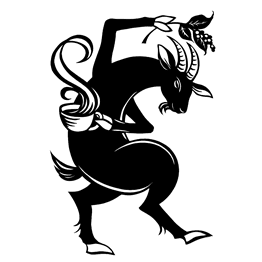Uncommon Grounds by Mark
Pendergrast, 1999, Excerpts
According to folklore an Ethiopian goatherd named Kaldi
discovered the joys of coffee when his goats ate the berries and became so
frisky that they “danced.” Once the Ethiopians discovered coffee it was only a
matter of time until the drink spread through trade with the Arabs across the
narrow band of the Red Sea. By the end of the fifteenth century, Muslim
pilgrims had introduced coffee throughout the Islamic world in Persia, Egypt,
Turkey, and North Africa, making it a lucrative trade item.
The drink gained in popularity throughout the sixteenth
century. The Ottoman Turks occupied Yemen in 1536, and soon afterward the
coffee bean became an important export throughout the Turkish Empire. The beans
generally were exported from the Yemenis port of Mocha, so the coffee from that
region took on the name of the port.
The Coffee Trader by David Liss,
2003, Excerpt
“I can tell you about Kaldi, the Abyssinian goatherd. He
lived quite some time ago, tending his flock in the hills of Abyssinia. One
afternoon he noticed that his goats were much more lively than usual, dancing
about, raising up on their hind legs, bleating out their little goat songs.
Kaldi spent several days watching them, and they grew increasingly more lively.
They ran and played and hopped about when they should have been sleeping. They
danced and sang instead of eating.”
“Kaldi was certain a demon had possessed the goats, but he
summoned his courage and followed the beasts, hoping got catch a glimpse of
this fiend. The next day, he saw that the goats had come upon a strange bush.
After they ate the fruit of the bush, they once again began to leap about.
Kaldi ate some of the berries himself, and soon he could not resist the urge to
dance with the goats.”
“A holy man happened by at that time and asked Kaldi why he
capered with his herd. He explained that he had eaten the fruit of the bush,
and it had filled him with untold vigor. So the holy man, who was a rather
boring fellow, took some fruit home. He was plagued by the fact that his
students would fall asleep while he was lecturing, so he made a drink out of
the berries and fed it to his students before he lectured. Soon he was known
throughout the world of Mohammedans as a man who could deliver discourses from
sundown to sunup without his students falling asleep.”
No One You Know by Michelle
Richmond, 2008, Excerpts
The story begins in Abyssinia in the ninth century. It
begins with a young goatherd named Kaldi, and with his goats, who refuse, one
evening, to follow him home. They are absorbed in a new discovery, a tree Kaldi
has never seen before, with dark glossy leaves and red berries. They eat and
eat, and it takes Kaldi a long time to coax them down from the mountain.
That night the goats don’t sleep. The next morning, when
Kaldi takes them again to the grazing place on the mountain, they return
immediately to the same tree. Like Eve, Kaldi is curious; he must have some
himself. The berries of the strange plant give him a feeling of alertness and
well-being. He goes back home and tells his family and friends what he has
experienced. Within a fortnight, the dervishes at a nearby monastery have
discovered that chewing the leaves of the mystical plant allows them to spend
less time sleeping, more time enacting their passionate devotions to God.
Dancing
Goats ® is a registered trademark of Batdorf & Bronson Coffee Roasters.

1 comment:
xe5678vaqi
golden goose outlet
golden goose outlet
golden goose outlet
golden goose outlet
golden goose outlet
golden goose outlet
golden goose outlet
golden goose outlet
golden goose outlet
golden goose outlet
Post a Comment